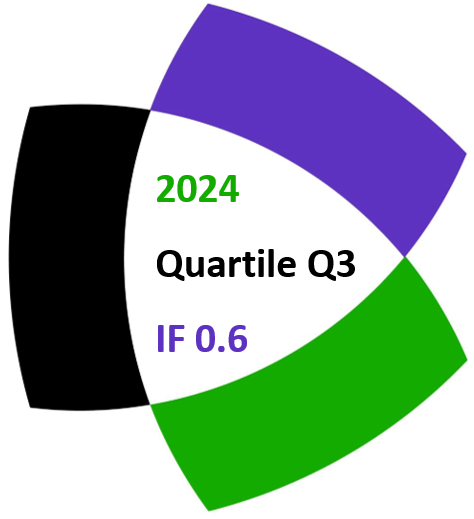Yangcheng Li
Notes on Number Theory and Discrete Mathematics
Print ISSN 1310–5132, Online ISSN 2367–8275
Volume 27, 2021, Number 3, Pages 113–118
DOI: 10.7546/nntdm.2021.27.3.113-118
Full paper (PDF, 199 Kb)
Details
Authors and affiliations
Yangcheng Li ![]()
School of Mathematics and Statistics, Changsha University of Science and Technology,
Changsha, 410114, People’s Republic of China
Abstract
It is well known that the number ![]() is called the
is called the ![]() -th
-th ![]() -gonal number, where
-gonal number, where ![]() . Many Diophantine equations about polygonal numbers have been studied. By the theory of Pell equation, we show that if
. Many Diophantine equations about polygonal numbers have been studied. By the theory of Pell equation, we show that if ![]() is a positive integer but not a perfect square,
is a positive integer but not a perfect square, ![]()
![]() ,
, ![]() and the Diophantine equation
and the Diophantine equation
![]()
has a nonnegative integer solution ![]() , then it has infinitely many positive integer solutions of the form
, then it has infinitely many positive integer solutions of the form ![]() , where
, where ![]() and
and ![]() ,
, ![]() .
.
Keywords
- Polygonal number
- Diophantine equation
- Pell equation
- Positive integer solution
2020 Mathematics Subject Classification
- 11D09
- 11D72
References
- Bencze, M. (2012). Proposed problem 7508. Octogon Mathematical Magazine, 13(1B), 678.
- Cohen, H. (2007). Number Theory, Vol. I: Tools and Diophantine Equations, Graduate Texts in Mathematics.
- Deza, E., & Deza, M. M. (2012). Figurate Numbers, World Scientific.
- Dickson, L. E. (1934). History of the Theory of Numbers, Vol. II: Diophantine Analysis, Dover Publications.
- Guan, X. G. (2011). The squares with the form
 . Natural Science Journal of Ningxia Teachers University, 32(3), 97–107.
. Natural Science Journal of Ningxia Teachers University, 32(3), 97–107. - Guy, R. K. (2007). Unsolved Problems in Number Theory. Springer-Verlag.
- Hamtat, A., & Behloul, D. (2017). On a Diophantine equation on triangular numbers. Miskolc Mathematical Notes, 18(2), 779–786.
- Hu, M. J. (2013). The positive integer solutions of the Diophantine equation
 . Journal of Zhejiang International Studies University, 4, 70–76.
. Journal of Zhejiang International Studies University, 4, 70–76. - Jiang, M., & Li, Y. C. (2020). The linear combination of two polygonal numbers is a perfect square. Notes on Number Theory and Discrete Mathematics, 26(2), 105–115.
- Le, M. H. (2007). The squares with the form
 . Natural Science Journal of Hainan University, 25(1), 13–14.
. Natural Science Journal of Hainan University, 25(1), 13–14. - Li, Y. C. (2020). Linear combinations of two polygonal numbers that take infinitely often a square value. Integers, 20, Article #A100.
- Peng, J. Y. (2019). The linear combination of two triangular numbers is a perfect square. Notes on Number Theory and Discrete Mathematics, 25(3), 1–12.
- Pla, J. (2014). On some subsets of the rational solutions of the equations
 . The Mathematical Gazette, 98(543), 424–428.
. The Mathematical Gazette, 98(543), 424–428. - Sastry, K. R. S. (1993). A triangular triangle problem. Crux Mathematicorum, 19(8), 219–221.
- Sastry, K. R. S. (1993). Pythagorean triangles of the polygonal numbers. Mathematics and Computer Education Journal, 27(2), 135–142.
- Scheffold, E. (2001). Pythagorean triples of polygonal numbers. The American Mathematical Monthly, 108(3), 257–258.
Related papers
Cite this paper
Li, Y. (2021). A Diophantine equation about polygonal numbers. Notes on Number Theory and Discrete Mathematics, 27(3), 113-118, DOI: 10.7546/nntdm.2021.27.3.113-118.


